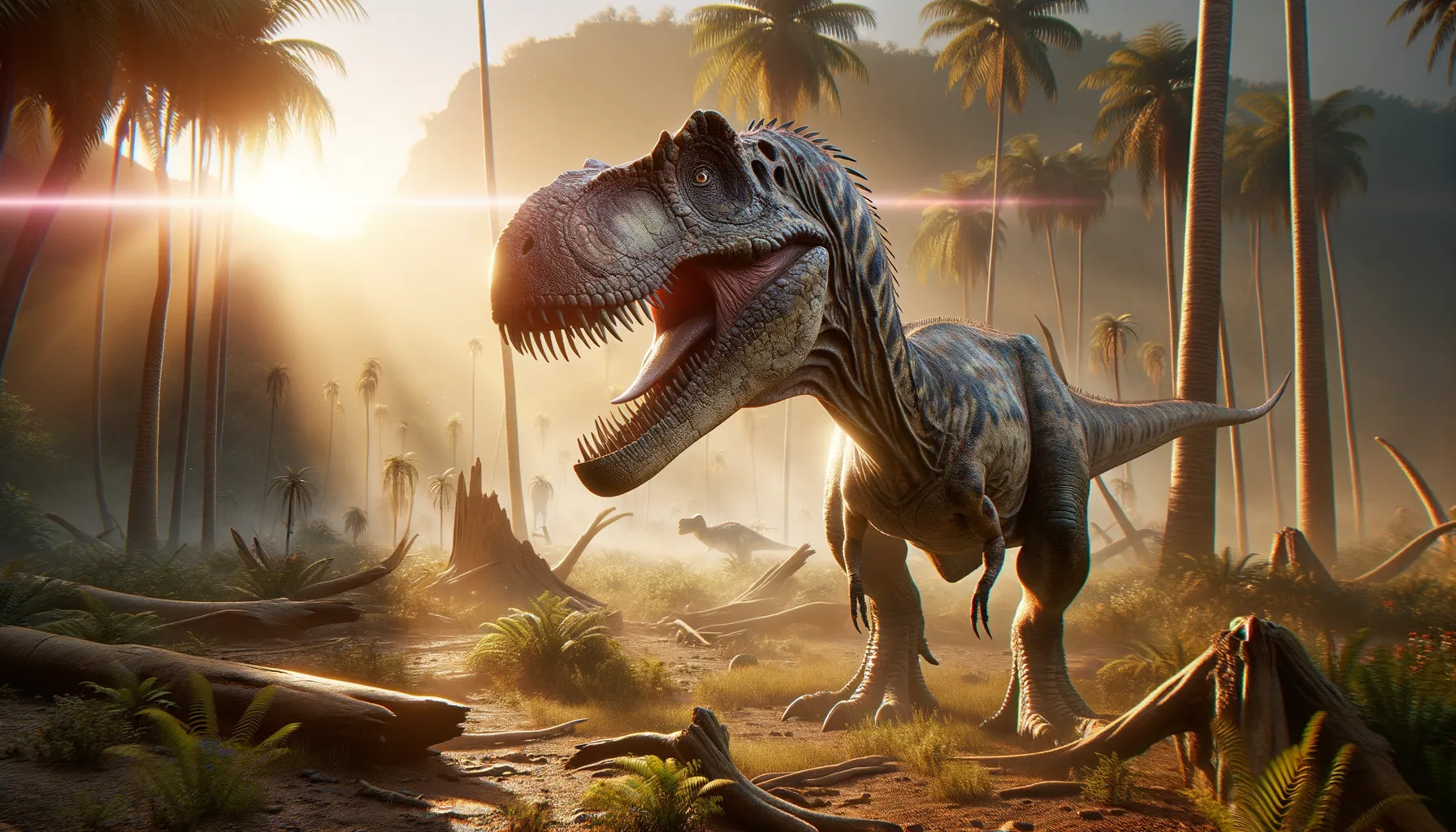
Rugops
The stealthy scavenger of the ancient savannah.
Period
Cretaceous
Length
Approximately 20 feet long.
Height
About 8 feet tall at the hips.
Weight
Approximately 1 ton.
Rugops was a mid-sized carnivorous theropod dinosaur that roamed Africa during the Late Cretaceous period. Its discovery expanded our understanding of the diversity of theropods in Africa. Rugops is distinctive for its short, robust skull adorned with small bony ridges. This dinosaur likely played a crucial role as a scavenger, helping to maintain the ecological balance by consuming carcasses left by other predators.
Diet
Rugops most likely fed on carcasses, making it a scavenger rather than a direct predator. Its diet would have included the remains of other dinosaurs and possibly small animals it could overpower.
Hunting
Rugops was not a strong or swift hunter but was adept at finding carcasses left behind by more dominant predators. Its small arms and powerful legs suggest it was not built for active hunting but rather for scavenging and perhaps occasional hunting of smaller prey.
Environmental challenges
Rugops lived in a semi-arid environment where water sources could be scarce. This scarcity often led to competition for resources among dinosaurs. Climatic shifts in the Cretaceous could also pose occasional threats, ranging from droughts to thunderstorms. These challenges required Rugops to adapt by developing efficient scavenging strategies.
Speed
Relatively slow, not built for high-speed pursuits.
Lifespan
Estimated to live around 20 to 30 years.
First discovery
Discovered by paleontologist Paul Sereno in 2000.
Fun Facts
- Rugops means 'wrinkle face' because of its bumpy skull texture.
- It lived about 95 million years ago during the late Cretaceous period.
- Rugops was a carnivore, but its small, weak jaw suggests it was more of a scavenger.
- This dinosaur was relatively small for a theropod, estimated to be around 20 feet long.
- Fossils of Rugops have been discovered in what is now Niger, Africa.
- Rugops might have had decorative features like skin or a crest on its head, though this is just a hypothesis.
Growth and Development
Rugops likely grew rapidly to reach adulthood within a few years, which was a common trait among theropods. This rapid growth phase would have been crucial to avoiding predation from larger theropods. As it matured, its growth rate would have slowed, allowing it to utilize resources more efficiently. Juveniles may have remained in protected, covered environments until they were large enough to fend for themselves.
Habitat
Rugops inhabited the floodplains and woodlands of Cretaceous Africa. The landscape was dotted with rivers and patches of forest, which provided shade and food. These environments supported a rich diversity of life, offering Rugops both challenges in terms of competition and opportunities for scavenging. The presence of water bodies likely attracted various herbivores, providing a food source through natural carrion deposits.
Interaction with other species
Rugops coexisted with multiple other dinosaur species, some of which were potential rivals. While it avoided direct confrontation with large predators, it would have encountered them at carrion sites. Its ecosystem also comprised herbivorous dinosaurs, which indirectly affected its survival by providing potential food sources in times of scarcity. Interaction with these species would have required strategic behavior to avoid conflict while accessing resources.
Natural lifespan
It naturally lived around 20 to 30 years in the wild.
Reproduction
Rugops likely reproduced by laying eggs in secure, hidden nests. The nesting grounds would have been chosen to protect eggs and hatchlings from predators. Hatchlings were vulnerable at birth, relying on their rapid growth for survival against potential predators. Parental care is uncertain, though incubation strategies would be necessary for ensuring the future generation's continuity.
Social behaviour
Rugops might have been a solitary creature, like many theropods, relying on its own wits for survival. However, it is possible that it formed loose groups when scavenging large carcasses. This behavior would have increased its safety when feeding in the open. Rugops likely communicated through physical displays or vocalizations to establish territory or ward off others.
Fossil locations
Fossils of Rugops have been primarily discovered in Niger, part of the Sahara Desert. These fossils provide insight into the theropod diversity of ancient Africa, enriching our comprehension of Cretaceous ecosystems. The discovery of Rugops in this region suggests varied climatic conditions that existed millions of years ago. Further exploration may uncover more fossil sites throughout the continent.
